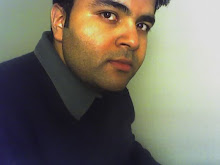As I see them, there are three types of management career tracks in Corporate America:
1. Corproate Track
2. Entrepreneurial Track
3. Celebrity Track
1. Corporate Track:
The corporate track is the track of having a 'job'. This is when you work for a company, large or midsize.
The lower end of the job is a junior level manager, and the high end is the corporate executive. There are millions of junior level managers: project managers, product managers, directors, account managers, etc etc. This mainly constitutes junior to middle management levels.
The high end is being an executive. This is being anything from a VP and above. These are all the VP's, the SVP's, the C-level officers etc. The best way to characterize these jobs is that you are very industry-centric and corporation focused. There are a lot of people in this bracket as well.
2. Entrepreneurial Track:
The entrepreneurial track also has a low and a high end. The low end entrepreneur is one who sets up his own business and becomes a player in the market. Their companies don't necessarily become market leaders, but they fare well, and even sell in the multiples of millions.
The high end entrepreneur is the one that takes his company to the point of market leadership. These are highly successful entrepreneurs with a track record of companies worth hundreds of millions, or billions. But they are not celebrities. Sabeer Bhatia of Hotmail is an example.
3. Celebrity Track:
Just like the above two groups, celebrity track also has it's low and high ends. The low end is when you are so good at what you do that your name gains the status of a celebrity 'within' the industry. For example: Andy Grove (Intel), Steve Wozniak (Apple), Vinod Khosla (KPCB), and many others are celebrities, but within their own industries.
The high end celebrity is when a name becomes mainstream. They are known both inside and outside the industry. The mainstream media knows them, the government knows them, the people know them, even the kids know them. Such are Bill Gates, Steve Jobs, Warren Buffett, the Waltons, etc.
It is interesting to see that the celebrities are created by both the corporate track and the entrepreneurial track. For example, Bill Gates is an entrepreneur, but Jack Welch grew through the ranks in GE.
Sunday, June 18, 2006
Basics of Management
At the very basic level, a manager is concerned about three 'w' questions:
1. What?
2. When?
3. Who?
That is, what would the company build? When would it build it? and who would build it.
Of course, these three 'w' questions can be buttressed by other ones such as 'Why' would a company build that it builds. Here I use the term build in a generic way. A company could build bridges, electronic systems, software solutions, or jet airplanes.
The why and what questions fall in the domain of product managers. Product managers decide why they want to take a step in the light of the market conditions, and they describe what it would look like in terms of product specifications or requirements.
The project managers, on the other hand, decide the when and who questions. Actually, the when question is negotiated among the product and the project teams. We can add another 'w' question after the who would build it clause: where would you build it?
With the increasing outsourcing movement and geographic aware strategy, the where question becomes an important one.
1. What?
2. When?
3. Who?
That is, what would the company build? When would it build it? and who would build it.
Of course, these three 'w' questions can be buttressed by other ones such as 'Why' would a company build that it builds. Here I use the term build in a generic way. A company could build bridges, electronic systems, software solutions, or jet airplanes.
The why and what questions fall in the domain of product managers. Product managers decide why they want to take a step in the light of the market conditions, and they describe what it would look like in terms of product specifications or requirements.
The project managers, on the other hand, decide the when and who questions. Actually, the when question is negotiated among the product and the project teams. We can add another 'w' question after the who would build it clause: where would you build it?
With the increasing outsourcing movement and geographic aware strategy, the where question becomes an important one.
Subscribe to:
Comments (Atom)
